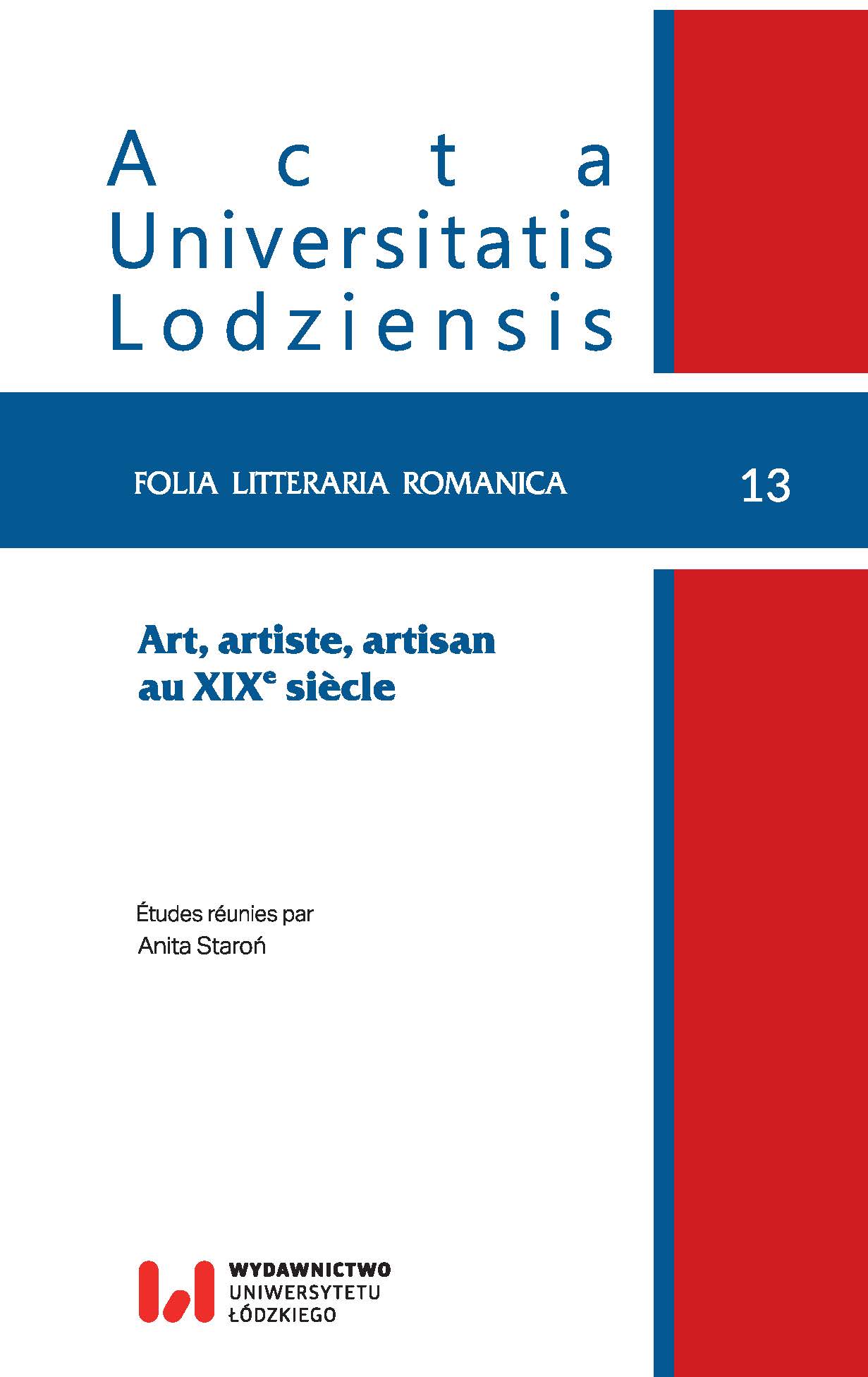The Modern Pygmalion. An Artist at Dusk of Art Form in "The Masterpiece" by Émile Zola
DOI:
https://doi.org/10.18778/1505-9065.13.11Keywords:
19th century literature, artist, genius, masterpieceAbstract
This article introduces a deliberation on the nature and work of an ingenious artist. Frenhofer and Claude Lantier are both artists-painters that try to transcend – thanks to their talents – the limit of their art form. They strive for enriching the otherwise two-dimensional painting plains with the third dimension by “invigorating” women they are creating. In order to do so they are forced to repudiate part of their humanity, to strongly confront reality and to utterly devote all their energy to an idealized concept formed by their imagination. They keep reiterating their work, introducing endless amendments that paradoxically bring about the contrary effect, since the pieces start to be overwhelmed with chaos and disintegration. The question arises whether the created pieces correspond to reality or are they maybe self-portraits of the ingenious artists that lead an inner fight with their internal exemplars?
Downloads
References
Arendt, Hannah, Condition de l’homme moderne, Paris, Calmann-Lévy, 1983
Google Scholar
Baltrušaitis, Jurgis, Aberrations. Quatre essais sur la légende des formes, Paris, Olivier Perrin, 1857
Google Scholar
Balzac, Honoré, de, Le Chef-d’oeuvre inconnu, Paris, Garnier-Flammarion, 1981
Google Scholar
Benjamin, Walter, « L’oeuvre d’art à l’époque de sa reproductibilité », OEuvres III, Paris, Gallimard, 2000, p. 67-113
Google Scholar
Berman, Marshall, Tout ce qui est solide se volatilise. Expérience de la modernité, Genève, Entremonde, 2018
Google Scholar
Certeau, Michel, de, L’invention du quotidien. Arts de faire I, Paris, Gallimard, 1990
Google Scholar
Clay, Jean, Bonjour Monsieur Manet, Paris, Centre Pompidou, 1983
Google Scholar
Clair, Jean, Eloge du visible. Fondements imaginaires de la science, Paris, Gallimard, 1996
Google Scholar
Clay, Jean, L’éclatement de l’impressionnisme, Musée du Prieuré, Saint-Germain-en-Laye, 1982
Google Scholar
Comte-Sponville, André, Dictionnaire philosophique, Paris, PUF, 2001
Google Scholar
Didi-Huberman, Georges, La peinture incarnée, Paris, Les Éds. de Minuit, 1985
Google Scholar
Foucault, Michel, « Le non du père », Dits et écrits. 1954-1988, Paris, Gallimard, 1994, p. 189-203
Google Scholar
Lyotard, Dolorès, « Pudeurs », Revue des Sciences Humaines, 2008, no 289, p. 105-137
Google Scholar
Milner, Max, Littérature française. Le Romantisme, T. I, (1820-1843), Paris, Arthaud, 1973
Google Scholar
Mitterand, Henri, « Le musée dans le texte », Les Cahiers naturalistes, 1992, no 66, p. 13-22
Google Scholar
Pagès, Alain, « Comment Zola écrivait-il », J.-P. Leduc-Adine, Genèse d’une oeuvre, Paris, ITEM, 2002
Google Scholar
Toulouse, Édouard, Émile Zola. Enquête médico-psychologique sur les rapports de la supériorité intellectuelle avec la névropathie, Paris, Société d’Éditions scientifiques, 1896
Google Scholar
Van, Gogh Vincent, Lettres à Théo, Paris, Gallimard, 1988
Google Scholar
Veil, Simone, La pesanteur et la grâce, Paris, Plon, 1988
Google Scholar
Zola, Émile, Correspondance. Nouvelle édition augmentée, Paris, Arvensa éditions, 2014
Google Scholar
Zola, Émile, Écrits sur l’art, Paris, Gallimard, 1991
Google Scholar
Zola, Émile, « L’OEuvre », Les Rougon-Macquart. Histoire naturelle et sociale d’une famille sous le Second Empire, Paris, Gallimard, la Pléiade, 1966, t. IV
Google Scholar
Downloads
Published
How to Cite
Issue
Section
License

This work is licensed under a Creative Commons Attribution-NonCommercial-NoDerivatives 4.0 International License.













